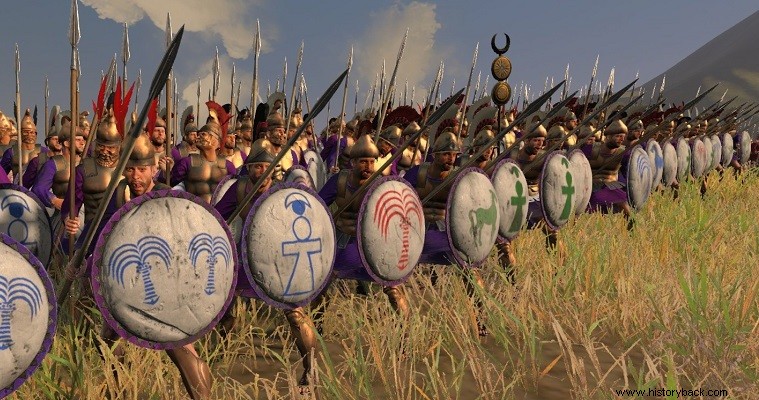
The name "Holy Mountain" is associated with Greece. Famous was the eponymous unit of the elite Thebans or later the men of Al. Ypsilanti. However, "Holy Leagues" were also extended by other states, the first being that of Carthage.
The Carthaginian "Holy Lochos" was established in the 4th century BC. apparently under the influence of the Theban of the same name, whose exploits against the, until then, invincible Spartans were spread throughout the ancient world. The Carthaginian "Sacred Tribe" was made up exclusively of citizens and indeed from the wealthiest families of the city. The civilians assigned to the unit had to pay for their own equipment, which was consequently excellent.
Status, organization, armament
The Carthaginian priest was characterized by his extremely high morale and his pride in his membership of the unit. He considered himself an elite warrior, part of a renowned unit. It was considered a great honor for the family that one of its sons was a member of the "Holy Society".
Thus, the children of the families who were expected to join the unit were trained from an early age so that they would be ready to fight when they came of age. The details of the training that the prospective priests underwent from their childhood are not known, nor of the final acceptance criteria.
The unit fielded 2-3,000 men, depending on the period. Diodorus the Sicilian states that the strength of the unit was 2,500 men. The men wore muscular metal, iron or brass breastplates or, as the case may be, linen breastplates reinforced with metal plates or scales and shin guards.
They also wore helmets of various types, from piloform to Phrygian type. The men carried a spear of the Greek type, usually 1.80 m long, a sword and a shield painted white with various emblems in its center. The shield was however more hollow than the original Greek one and had a diameter of 1m. approximately, being slightly larger than the Greek one. An interesting detail concerns the men who carried the unit's banners and had a lion on their helmets.
The last reserve
The "Holy Horde" classically fought as a phalanx of hoplites based on Greek standards. However, the smaller spear put the Carthaginian priests at a disadvantage against the Greek hoplites. The "Holy League" theoretically fought only in the African territories of the Carthaginian territory. However he campaigned in Sicily.
The soldier of the "Holy Company", due to his origin, training and armament, rightly considered himself an elite fighter and really constituted the core of the army. In battle he fought somewhat like Napoleon's Old Guard, forming the last reserve and entering the fray only when the specter of defeat loomed.
Battles with the Greeks
In the battle of the Krimisos river, the Carthaginian hierolohites were the center of the Carthaginian order and the last reserve of the huge army of generals Asdrouba and Amilkas. Nevertheless, the Carthaginians were soundly defeated by Timoleon of Syracuse.
The "Holy League" was literally wiped out and depending on the source 2,500-3,000 of its men were killed. Nevertheless, 30 years after the destruction, the "Holy Lochos" was reorganized, in 311 BC. campaigned again in Sicily.
The following year, however, he found himself, on African soil, facing the Greeks of the tyrant of Syracuse, Agathocles. There again they were defeated by the experienced Greeks. According to Justin, all 2,000 Carthaginian prelates fell in the battle. Other sources report that the unit lost 50% of its strength.
